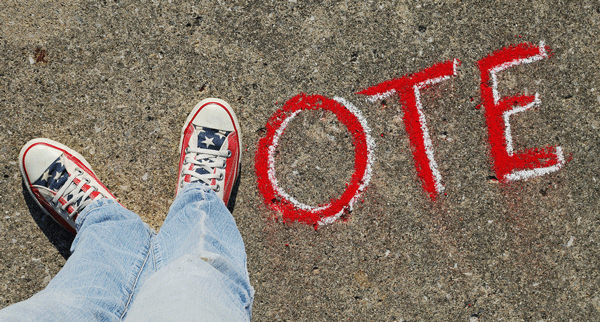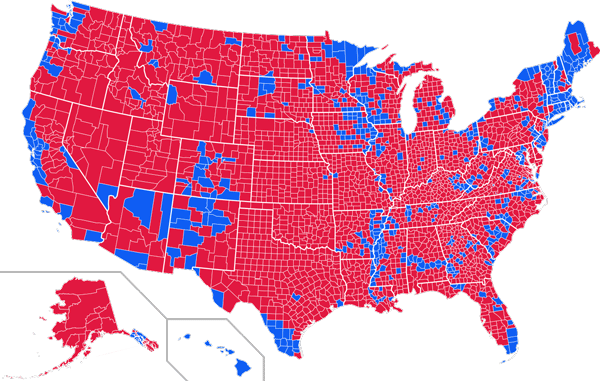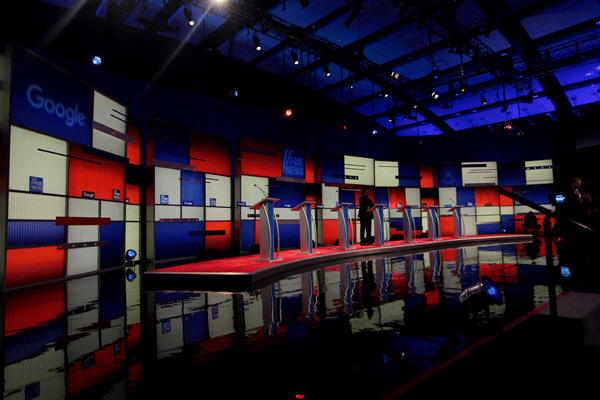Rebranding 2016
Published on November 10, 2016, at 6:41 p.m.
by Ashley Stults.
The 2016 election has been like no other. Both parties have used uncharacteristic political tactics and seen unpredictable voting. While the Democrats had an unexpected split within the party – as many young voters gravitated toward Bernie Sanders instead of Hillary Clinton – the Republicans saw a true outsider rise to the top. What happens once the election is over, and where do the parties go from here? How can the Republicans and Democrats be better prepared for future elections?
The answer is rebranding.
Running against Clinton in the primaries, Sanders surprised many when he beat out Clinton in the Oregon primary and almost took Kentucky as well. Sanders did well with young voters, while Clinton’s base was predominantly older people. Although many political analysts correctly predicted that Clinton would seize the nomination, many were surprised that Sanders did as well as he did, especially among young adults who aren’t as likely to vote. On the other end of the political spectrum, Trump rose to the top of the Republican party when many analysts assumed he would fizzle out. Sanders’ small victories and Trump’s rise to become the Republican nominee speak to a larger truth: voters want major change, not just for our country, but within the two parties.

Republicans
More than 15 Republican candidates ran for president this election. All have political backgrounds, save for three: Ben Carson, Carly Fiorina and Donald Trump. While Carson and Fiorina slipped in the polls after several months and a few debates, Trump maintained his lead, leaving many people curious as to how an outsider with no background in politics could go so far.
“A huge group of people are really fed up with the government. They’re angry, and Trump has used that anger to rise up,” said Chassity Martin, vice president of Wayne County Republican Women and former city commissioner of Collinwood, Tennessee. “Trump has brought others into the party, but he has also driven a lot of people away — especially young voters.”
While it is no surprise the Republican party is split, what does this mean for the future of the party?
“The Republican party will have to figure out how to include minorities and new Republicans who lean toward the Libertarian side,” said Martin.
Wayne County Election Commissioner Lillie Ruth Brewer echoed that assessment.
“Republicans are divided,” Brewer said. “They need to figure out a way to come together.”
The party has no choice but to address the concerns and frustration its supporters feel.
“The Republicans have a lot of work to do,” said Brewer.

Older conservative voters tend to care deeply about the military, economy and taxes, while young conservatives often feel passionately about personal freedom, jobs and social issues. Rebranding the Republican party to be more inclusive and offer something for everyone has the potential to change the party for the better. Old and young alike could find favor with the party, while still maintaining its core values.
Additionally, the Republican party will have to find a way to recover from Trump’s nomination. Several scandals have plagued the Trump campaign, leaving Trump virtually unfazed, but damaging the party’s reputation as a whole. His comments about women, minorities and immigrants have left the party with a lot of explaining to do.
Republicans have struggled for years to gain support among women and minorities. Several Republicans such as Marco Rubio and John Kasich have vocalized their support for paths to amnesty. Maryland Gov. Larry Hogan did well among African-American voters in his 2014 election, and U.S. Rep. Steve Pearce performed well among Hispanic voters.
These small steps aimed at becoming a more inclusive party were quickly forgotten as Trump started his campaign off with a speech stating “When Mexico sends its people, they’re not sending their best. … They’re bringing drugs. They’re bringing crime. They’re rapists.” The GOP will have to rebrand in such a way that shows voters it is a truly inclusive party and that all races, religions and backgrounds are welcome.
Democrats
In a recent Pew Research Poll conducted among registered voters, 50 percent of Democrats planning to vote for Clinton say their vote is more against Trump than pro-Clinton. While Bernie Sanders won the young vote by a vast majority, Clinton has struggled to gain popularity among millennials.
“For the Democrats, there wasn’t really anyone else they could run besides Hillary,” said Martin.
“Hillary was in line to be the Democrat nominee. She was Secretary of State and first lady. She’s been very active in politics, so it made sense to the Democrats that she be the front runner. The Democrats didn’t really look at other options,” said Brewer.
The fact that Sanders did so well is something the party must take note of for the future. Sanders was a huge advocate for free college, campaign finance reform, increasing minimum wage and fighting to improve race relations. These issues and Sander’s stance on them, resonated astoundingly well with millennials.
The Democratic party must take young voter’s opinions into account and rebrand in such a way that satisfies millennials.

Benghazi, the email scandal and an FBI investigation only added to the Democrats’ problems this election. Young voters are especially skeptical of Clinton, questioning her trustworthiness. With the election right around the corner, the Clinton campaign is still plagued with scandals, making it an uphill battle to persuade voters that Clinton is trustworthy.
Just like Romney was criticized in 2008 for seeming out of touch, Clinton has also been deemed by many as disconnected. The Clinton family is seen as powerful and wealthy, making Hillary less relatable to the average voter. In a recent Washington Post-ABC News poll, Clinton’s favorable rating was a mere 38 percent. Some analysts believe this is partly due to the fact that her platform aligns closely with Obama’s. Many of her campaign goals include continuing policies developed under the Obama administration. As a big advocate of the Affordable Care Act, an act that deeply divided voters, Clinton has promised to defend and expand it. Because Clinton is tied to Obama, her image and reputation also takes a hit when his does.
Clinton’s potential presidency has been referred to by many as an extension of the Obama administration. Voters have made it clear that they want to see a new president with new ideas, and since Clinton’s campaign closely mirrors Obama’s, it makes it hard for voters to believe that she will bring change into the White House.
The Democrats’ rebranding should begin with making sure candidates are seen as relatable, reliable and favorable. Likability plays a huge role in elections, and the Democrats have struggled in this area this election. Additionally, scandals like WikiLeaks embarrass not only Clinton, but the party as a whole.
Democrats must face these problems head on and rebrand the party in such a way that voters feel it can be trusted, and that the candidates put forward by the party are worthy and responsible. The young voter demographic is increasingly crucial, and the Democrats must find middle ground candidates that attract both the young and old. If Democrats can lock young voters in, it will help ensure a solid voter base for future elections.
With just a few days to go until America chooses a new president, both parties have a lot of work to do down the road. Voters have shown that they are fed up with the current political climate, and they demand change. Both parties must reflect on their core values and listen to the complaints of their voters in order to successfully rebrand.
This election season has baffled political analysts and strategists alike. Both parties can use this experience to their rebranding advantage by examining what worked this election cycle and what didn’t. Rebranding will allow the parties to move forward in the future and potentially see better results among voters.




